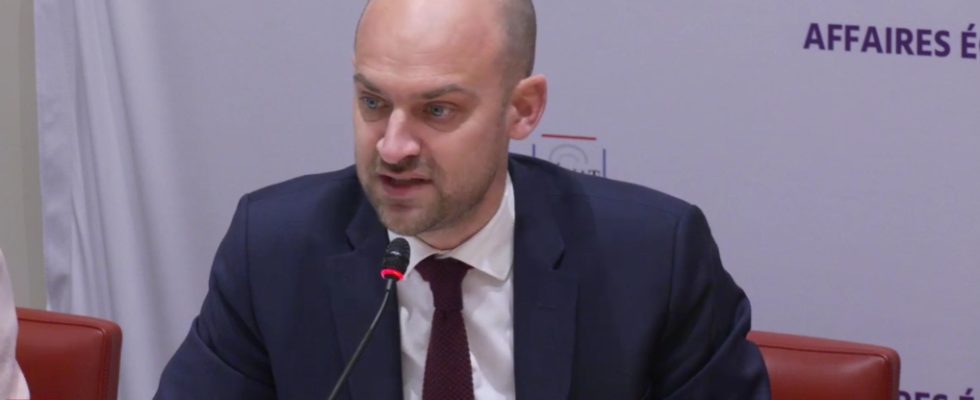After Christel Heydemann (Orange), Laure de la Raudière (Arcep) and Xavier Niel (Free), it was Jean-Noël Barrot’s turn to be heard, on April 12, by the Senate’s Economic Affairs Committee in order to complete a cycle in the telecom industry market and its regulation.
The Minister Delegate in charge of the digital transition and telecommunications first of all welcomed the success of the France Very High Speed Plan. Launched under François Hollande in 2013, it achieved, ten years later, its objective of making 80% of French homes connectable to fiber optics. The minister hails the industrial success of this FFTH plan. “France is now at the head of the countries with the most fiber in Europe”.
“Connectable does not mean connected”
But “connectable does not mean connected”, observes Jean-Noël Barrot. It therefore calls for a final step to complete the deployment of fiber throughout the territory. It is also necessary to make the remaining 20% homes connectable. Particularly complex and expensive connections for homes or businesses located in remote areas.
As ten years ago, when the FFTH plan was launched, he proposes to bring together all the stakeholders – the State, the operators and the local authorities – in order to distribute the “fairly significant” financial effort still to be made, in particular by terms of civil works. A call that resonates with the “Good Deal” of digital put forward by industrialists and communities gathered within InfraNum and Avicca.
It is also about helping less well-off households to switch from ADSL to fiber. Taking up his idea of a “right to very high speed for all”, the Minister intends to set up “social tariffs”, accompanied by a guaranteed minimum speed. It also provides for the decoupling of offers. A consumer who wishes to take out a telephone subscription should not be offered an offer linked to the Internet.
Like state aid for the installation of charging stations for electric vehicles at home, a similar device is being studied to support the financing of the work that is the responsibility of the individual to bring the fiber to his home. .
5,000 white areas erased by 2027
The counterpart of the France Very High Speed plan on the mobile network side is called the New Deal Mobile. This program, which aims to generalize 4G/5G on the territory, is celebrating its fifth anniversary. Another success in the eyes of the minister. 5,000 white zones should be permanently erased from the map by 2027 at the latest.
What after? The National Agency for Territorial Cohesion (ANCT) is already informing local authorities of the needs still unmet by the New Deal Mobile and anticipating future deployments.
Accelerating the deployment of fiber and 5G is all the more imperative as the networks they replace are set to disappear. The technical shutdown of the copper network is scheduled for 2030, while the shutdown of the 2G and 3G networks will take place between 2025 and 2028.
Accelerated deployment at the expense of quality
This massive migration assumes that the new networks offer all the expected quality of service. This is the other theme addressed by Jean-Noël Barrot. While the copper network has been deployed for several decades, fiber has only been deployed for ten years. A deployment speed – “on average since 2018, 20,000 fibers have been deployed per day” – which sometimes contravenes the quality of the connections.
Between the damage to technical cabinets and wild disconnections, many individuals and local elected officials are expressing their dissatisfaction. The Minister recalls that since September an action plan has been initiated to strengthen controls and ensure the recovery of defective networks.
This notably involves taking photos before/after an intervention, attached to the reports. Better coordination between the infrastructure operator who manages the concentration points and the commercial operator who provides the connection to the subscriber on the last meters should prevent everyone from transferring responsibility in the event of failure.
A reinforced power of control and sanction for Arcep
References must also make it possible to ensure the competence of the technicians working on site. This raises the question of subcontracting. Commercial operators use subcontractors who sometimes subcontract the intervention to other service providers.
Although he considers it imperfect, Jean-Noël Barrot does not want to question the Stoc mode (subcontracting by the commercial operator) which, in his view, would only shift the responsibility to the infrastructure operator. This one sometimes also having the cap of commercial operator, the subcontractors would risk being the same ones.
On the other hand, the Minister supports a provision of Senator Patrick Chaize’s bill aimed at ensuring the quality and durability of very high speed fiber optic electronic communications networks and which must be presented to the Senate on May 2.
In its article 4, the text provides for a strengthening of the powers of control and sanction of Arcep, the telecoms regulatory authority. “It would be a shame if a fiber quality problem tarnished the picture of a real industrial success,” concludes Jean-Noël Barrot.
